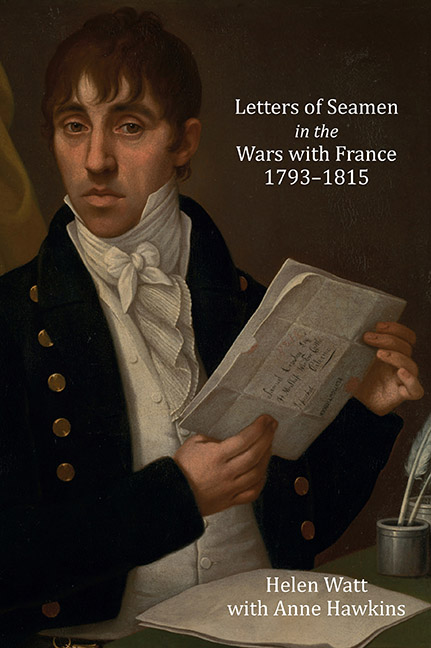Book contents
- Frontmatter
- Dedication
- Contents
- List of Illustrations and Tables
- Foreword
- Preface
- Acknowledgements
- Editorial Conventions
- List of Abbreviations
- Introduction
- Part 1 Thus Dear Father passes the life of a Tar’: Letters of Seamen, 1793–1815
- The Letters A1–194
- Part 2 A great Disturbance among the Fleet’: Letters, Mostly Intercepted, to and from Seamen During the Mutinies in the Royal Navy, 1797
- Letters B1–61
- Conclusion
- Appendix I Biographies
- Appendix II Select Ships Involved in the Mutinies in the Royal Navy, 1797
- Bibliography
- Index
Part 2 - A great Disturbance among the Fleet’: Letters, Mostly Intercepted, to and from Seamen During the Mutinies in the Royal Navy, 1797
Published online by Cambridge University Press: 26 May 2021
- Frontmatter
- Dedication
- Contents
- List of Illustrations and Tables
- Foreword
- Preface
- Acknowledgements
- Editorial Conventions
- List of Abbreviations
- Introduction
- Part 1 Thus Dear Father passes the life of a Tar’: Letters of Seamen, 1793–1815
- The Letters A1–194
- Part 2 A great Disturbance among the Fleet’: Letters, Mostly Intercepted, to and from Seamen During the Mutinies in the Royal Navy, 1797
- Letters B1–61
- Conclusion
- Appendix I Biographies
- Appendix II Select Ships Involved in the Mutinies in the Royal Navy, 1797
- Bibliography
- Index
Summary
In contrast with Part 1, the letters in Part 2 relate to a much narrower timespan during the wars with France, and to some very specific events that took place within it over three months in 1797, the series of mutinies which occurred among ships in the Royal Navy (Table 4).
The origins and causes of those mutinies, especially that which took place at the Nore, are still a topic for debate. Of all these mutinies, the mutiny at the Nore, starting on 12 May on Sandwich (90), the flagship of the Port Admiral there, and lasting until around 15 June, became the most notorious for the militant attitudes and violent actions of its mutineers. The earlier Spithead mutinies have often been regarded as ‘strikes’ by ordinary seamen, as Ann Coats has shown recently, drawing on a long-standing tradition of putting demands to the Admiralty, in this case for better pay and conditions. Although there were outbreaks of violence at Spithead, some concessions were won by the mutineers there after negotiations between the Admiralty and the sailors. By contrast, the mutiny at the Nore seemed very different; the mutineers presented the Admiralty with a much longer list of demands, but no further negotiations ensued. The more measures the government put in place to attempt to force the sailors to return to duty, the more extreme the mutineers became, and their extraordinary actions are described further below.
Bonner-Smith was of the opinion that all documents relating to the mutiny at the Nore should be published, to settle this question once and for all. Perhaps as a contribution towards this aim, he himself edited a diary giving an eyewitness account of the mutiny at the Nore from the point of view of the military on shore. It would probably be impracticable to carry out his recommendations, but the publication of selected documents, such as the letters in this section, would certainly throw more light on the subject. Written between April and July 1797, these letters give a snapshot of events during and just after the mutinies in the Royal Navy, particularly the mutiny at the Nore.
- Type
- Chapter
- Information
- Letters of Seamen in the Wars with France, 1793-1815 , pp. 371 - 402Publisher: Boydell & BrewerPrint publication year: 2014



